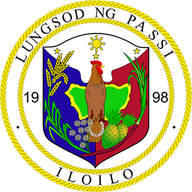In the bottom of Panay Island in the Visayas Regions lies a gem that is set to become the center of agri-industrial development and progress. Passi City, the beating heart-shaped center, is a rice and sugar-rich area and the only component city in the island of Panay. In Iloilo, Passi City is one of the oldest settlements founded as a “pueblo” with its first church built in 1766. It is also the largest in the Province of Iloilo, in terms of land area, population and income.

Centrally situated in the island of Panay, Passi City can be reached by any mode of land transportation via the Nautical Highway within 45 minutes from Iloilo City and one hour from Roxas City. It is also geographically located South of Dumarao , Southeast of Bingawan, East of Calinog, Northeast of Dueñas, North of San Enrique, and Southeast of San Rafael (Passi City Profile, 2017).
The Department of Finance classified Passi as a 4th Class Municipality in 1993. In 1995 it became a 3rd Class Municipality and in 1996 it was classified as a 2nd Class Municipality. On January 30, 1998, it became the first Component City of Iloilo after the President Fidel V. Ramos signed R.A. No. 8469.
Passi has a total land area of 25,139.13 has. or 251.3913 sq. km. which is approximately 5.39 percent of the total land area of the whole province of Iloilo. It is composed of 36 rural barangays ad 15 urban barangays. It is relatively dominated by rolling hills and narrow valley plains. The city is traversed by 5 major rivers namely (1) Jalaur River, (2) Lamunan River, (3) Hin-ayan River, (4) Asisig River, and (5)Maliao River. Like most owns of Iloilo, Passi City belongs to the third type climate which has no very pronounced maximum rain period with a dry season lasting from one to three months.
Passi City has a projected population of 80,802 people for 2017, with, 250 males and 93, 632 females. It has an annual growth of 0.21% from 2010-2015, according the NSO population census.
Within the City are beautiful natural and man-made attractions that every visitor urged to see in order to enjoy the full Passi City Experience.

